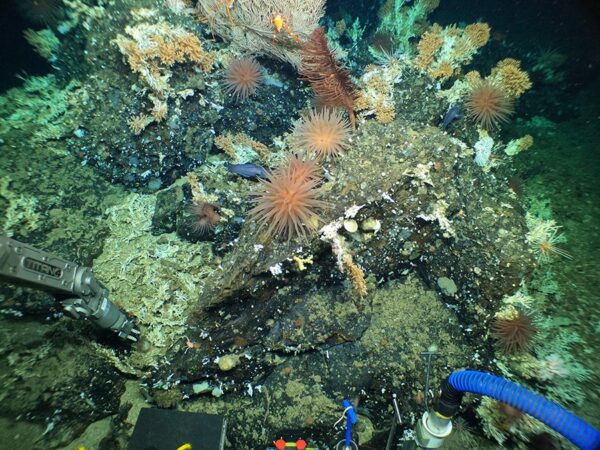A never-before-seen deep-sea reef featuring coral thousands of years old and “teeming with life” has been discovered in the Galápagos Marine Reserve.
The first reef observed was found at 400-600m (1,310-1,970 feet) depth at the summit of a previously unmapped seamount in the central part of the archipelago and supports a breath-taking mix of deep marine life.
©Woods Hole Oceanographic Institution
The impressive reef structure was first recorded by Dr. Michelle Taylor (University of Essex, UK) and Dr. Stuart Banks (Charles Darwin Foundation, Ecuador) while diving in the deep-sea research submersible Alvin, operated by the Woods Hole Oceanographic Institution (WHOI, USA).
Prior to this discovery, Wellington Reef off the coast of Darwin Island in the far north of the archipelago was thought to be among the few structural shallow coral reefs in the Galápagos Islands to have survived the 1982-83 El Niño event. The new discovery made during dives by scientists in the HOV Alvin shows that sheltered deep-water coral communities have likely persisted for centuries in the depths of the GMR, supporting rich, diverse, and potentially unique marine communities.
Dr Stuart Banks, Senior Marine Researcher at the Charles Darwin Foundation said: “The captivating thing about these reefs is that they are very old and essentially pristine, unlike those found in many other parts of the world’s oceans. This gives us reference points to understand their importance for marine natural biodiversity heritage, connectivity with regional MPAs, as well as their role in providing goods and services such as carbon cycling and fisheries. It also helps us reconstruct past ocean environments to understand modern climate change.
About the Galapagos Deep 2023 expedition
The Galapagos Deep 2023 expedition is currently exploring the uncharted depths of the Galapagos Marine Reserve with the historic deep-sea submarine Alvin. Twenty-one scientists are on board the expedition which began on March 27th and ends on April 22nd.
Further information about the expedition can be found here.
